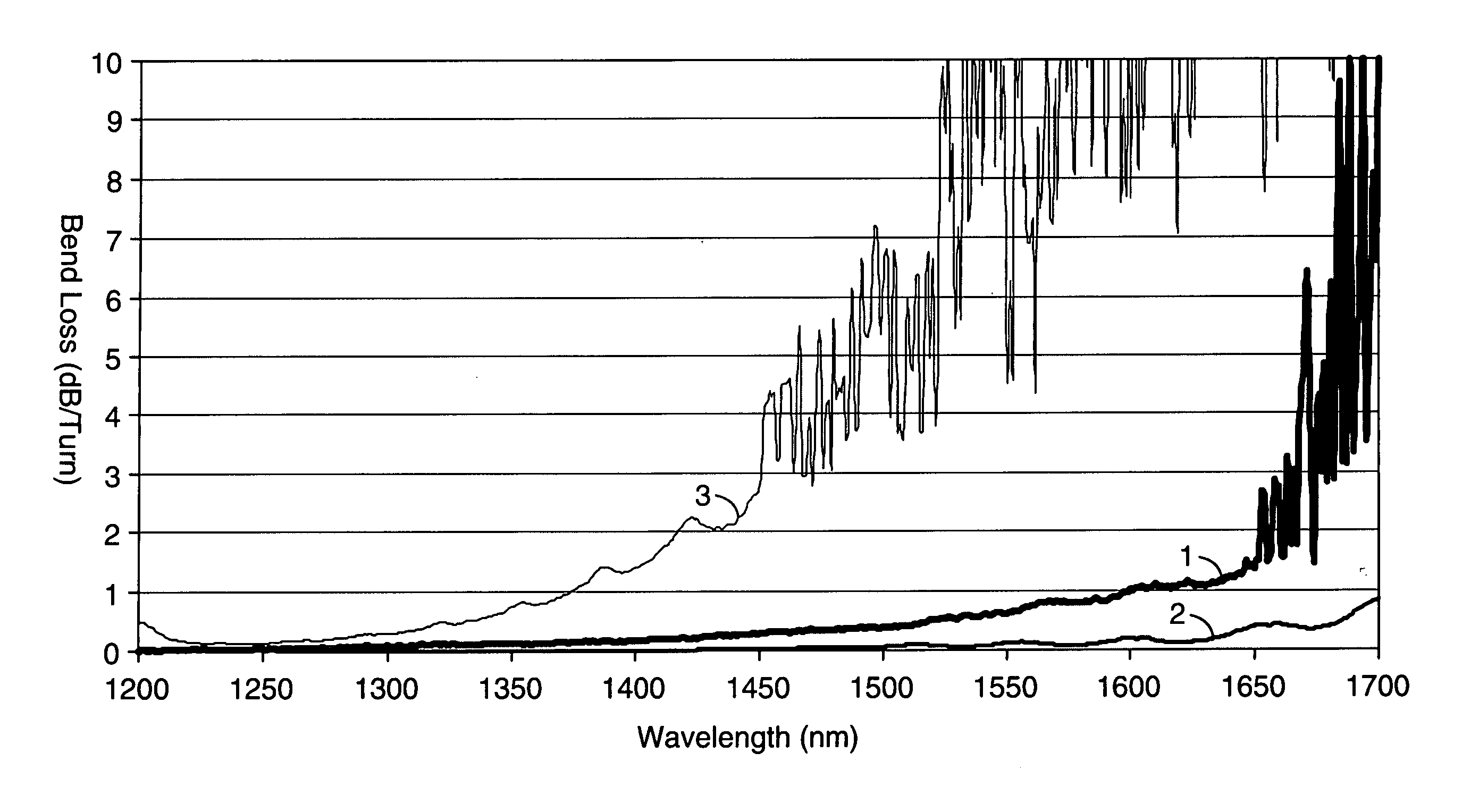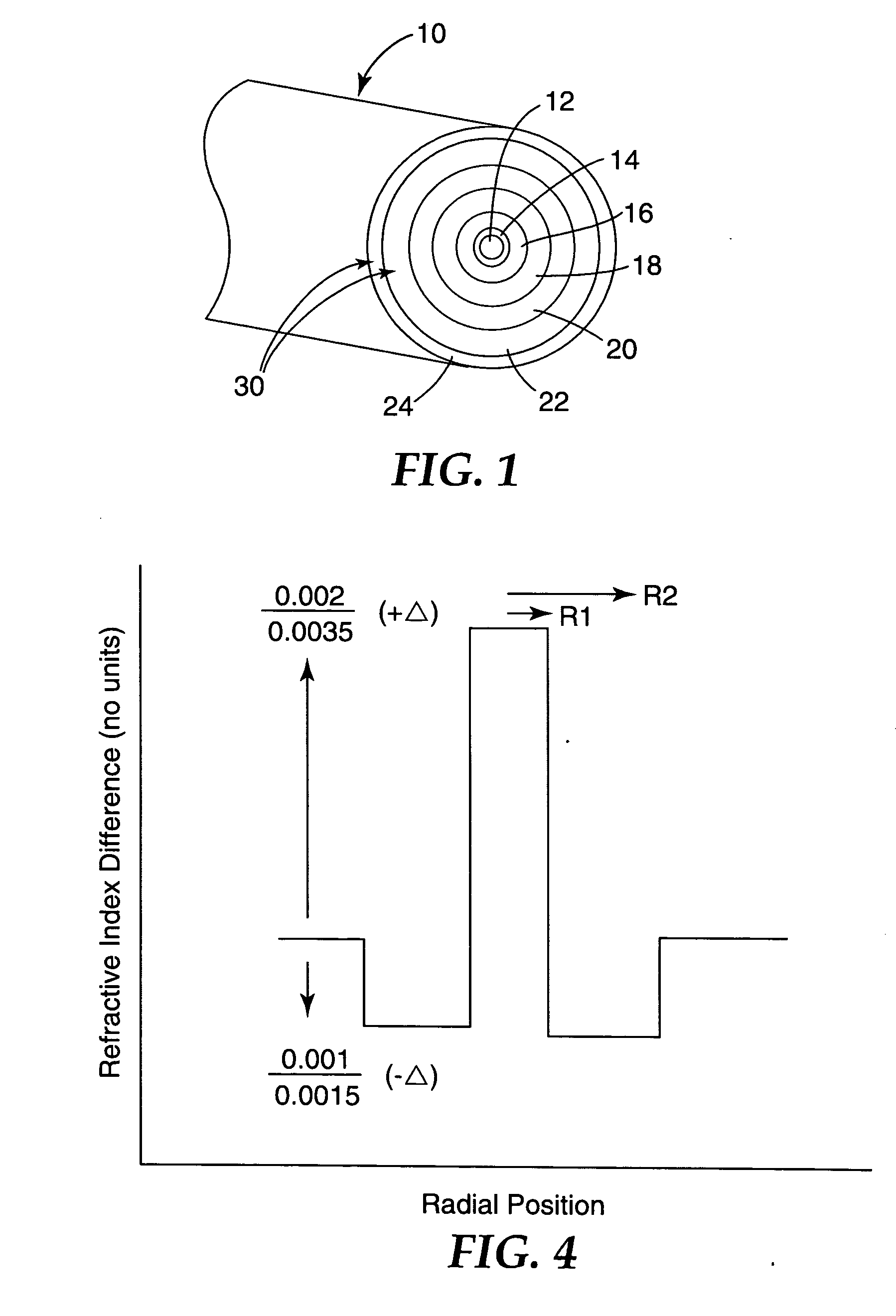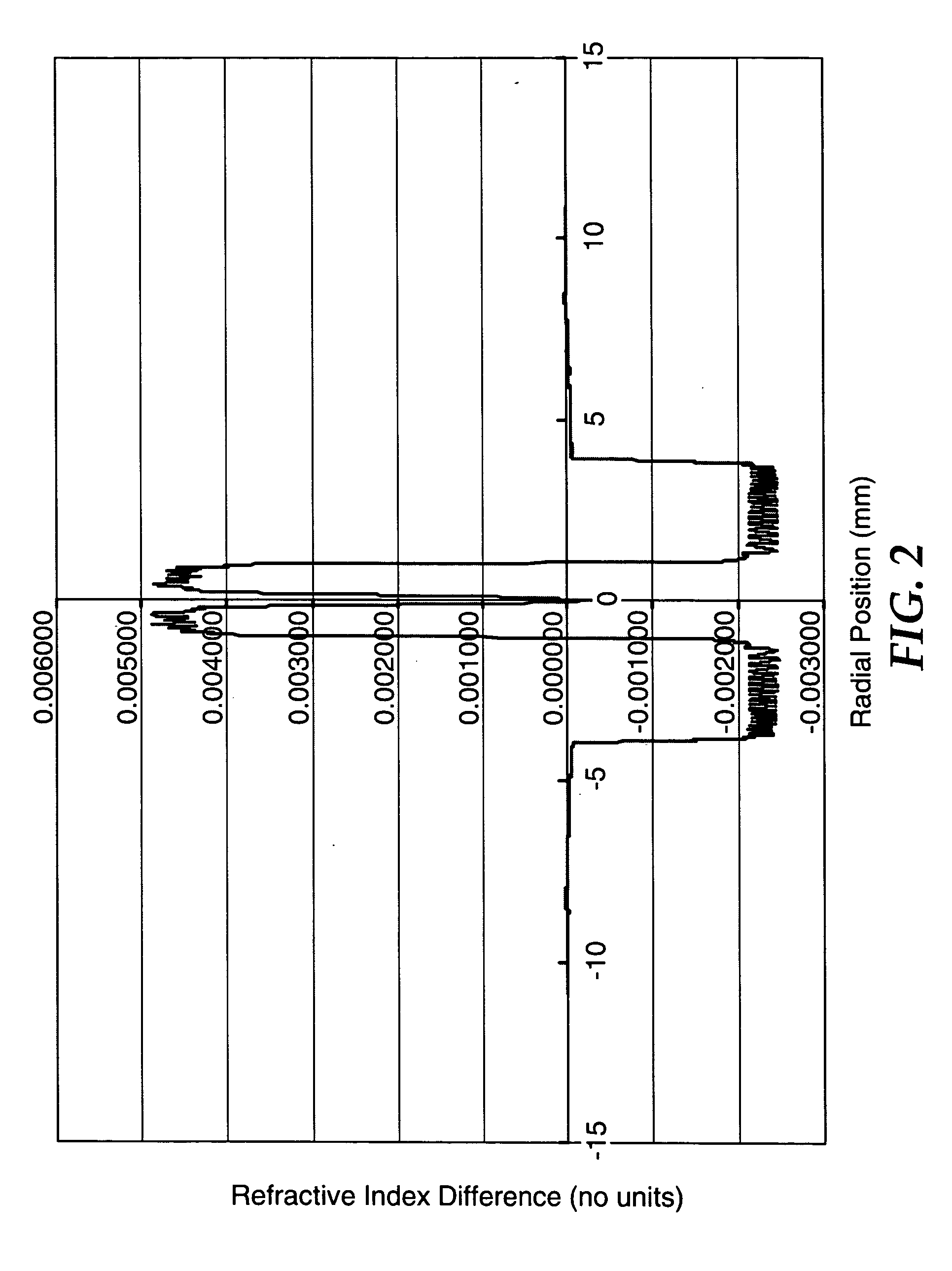Triple-band bend tolerant optical waveguide
a technology of optical waveguides and bend tolerance, applied in the field of optical waveguides, can solve the problems of loss, bending loss, and loss of light radiated out of the core into the cladding of the fiber, and achieve the effect of tight bend tolerance and minimal splice loss
- Summary
- Abstract
- Description
- Claims
- Application Information
AI Technical Summary
Benefits of technology
Problems solved by technology
Method used
Image
Examples
example 1
[0056] One exemplary embodiment of an optical fiber in accordance with the present invention has the following material composition:
[0057] A preform having the material composition described above was manufactured using the modified chemical deposition (MCVD) process using a 19×25 mm fused silica tube by first depositing 20 cladding layers with flows of 412, 40 and 19 standard cc / min of SiCl4, POCl3, and SiF4, respectively. This was followed by 7 core layers consisting of 96 and 90 standard cc / min of SiCl4 and GeCl4, respectively, followed by two collapse passes and one seal pass resulting in a preform diameter of 17.8 mm. One or more overcollapses using 19×25 mm fused silica tubes may be required to obtain a final preform diameter of 23 mm. The refractive index profile of this preform prior to overcollapse is shown in FIG. 2. The preform was overcollapsed prior to drawing, and was drawn as an optical fiber.
[0058] In the present example, a hard, permanent polymer coating is placed...
example 2
[0073] A second sample of optical fiber having a similar design in accordance with the present invention was drawn and measured, with the following properties:
[0074] a.) clad / core radius ratio is 3.9
[0075] b.) +Δ of 0.0027
[0076] c.) −Δ of −0.0012 d.)
[0077] d.) ΔTot of 0.0039.
This design resulted in example fiber with the following properties:
[0078] Cutoff wavelength=1310 nm
[0079] MFD @ 1300 nm=8.1 microns
[0080] MFD @ 1550 nm=9.2 microns
[0081] Bend loss (10 mm radius)=0.02 dB / turn @ 1550 nm
[0082] Bend loss (10 mm radius)=0.08 dB / turn @ 1625 nm
[0083] Bend loss (10 mm radius)=0.12 dB / turn @ 1650 nm
[0084] Index delta values were taken from measurements done on the fiber preforms before fiber drawing. The measurements were done with a He—Ne laser at 633 nm. The refractive index of the outer cladding in these fibers is essentially the same as pure silica, which for calculation purposes was taken to be 1.458 at 633 nm.
example 3
[0085] The bend performance of an optical fiber in accordance with another embodiment of the present invention (SMGGP-TW) was compared with commercially available SMF-28™ fiber from Corning, with commercially available Volition™ single wavelength band fiber (SMGGP-SW), and a dual wavelength band fiber (SMGGP-DW, as described in commonly-owned, currently pending U.S. Publication No. 03-0231847-A1) from 3M Company, St. Paul, Minn.
Bend lossCutoffMFDMFD1550 nmRic / Cable1300 nm1550 nm1550 nm1625 nmdB ¼+Δ−ΔΔTotRconmμmμmdB / turndB / turnturnCorning0.00350.00359.210.40.380.62.4SMF28 ™SMGGP-SW0.00240.00249.210.411.63.3SMGGP-DW0.0020−0.00280.00482.69.010.00.61.20.12SMGGP-TW0.0025−0.00160.00413.48.69.40.10.30.05
[0086] In the above table, the bend loss measurements for columns 9 and 10 were measured using a 10 mm bend radius, and the bend loss measurements shown in column 11 (last column) were measured using a 6 mm bend radius (¼ turn). The table above shows that the SMGGP-TW fiber has much lower...
PUM
 Login to View More
Login to View More Abstract
Description
Claims
Application Information
 Login to View More
Login to View More - R&D
- Intellectual Property
- Life Sciences
- Materials
- Tech Scout
- Unparalleled Data Quality
- Higher Quality Content
- 60% Fewer Hallucinations
Browse by: Latest US Patents, China's latest patents, Technical Efficacy Thesaurus, Application Domain, Technology Topic, Popular Technical Reports.
© 2025 PatSnap. All rights reserved.Legal|Privacy policy|Modern Slavery Act Transparency Statement|Sitemap|About US| Contact US: help@patsnap.com



